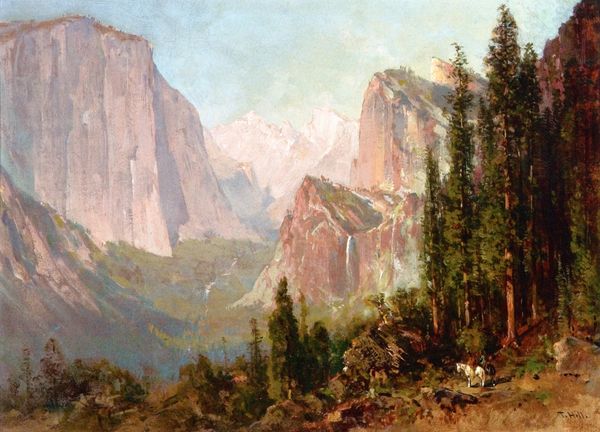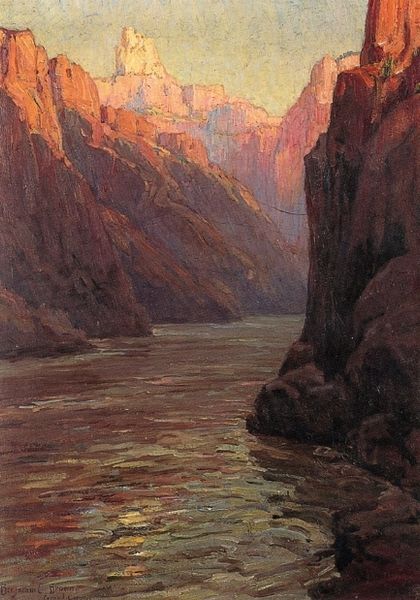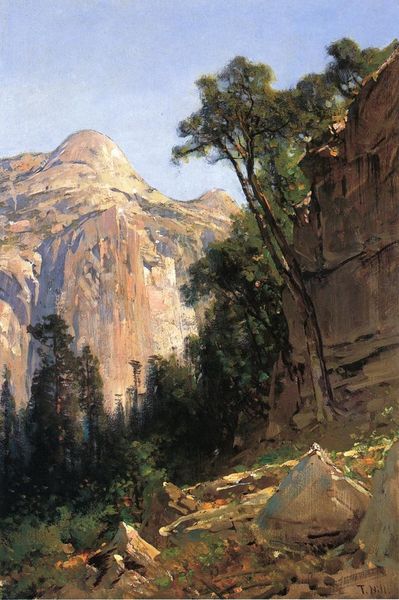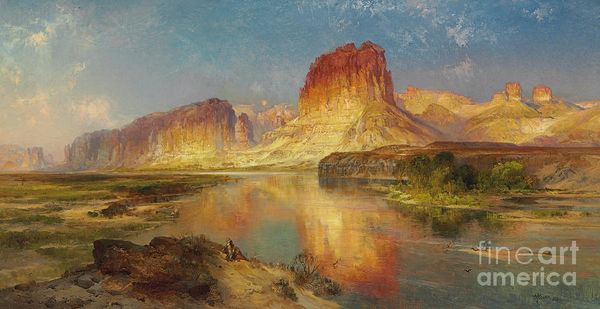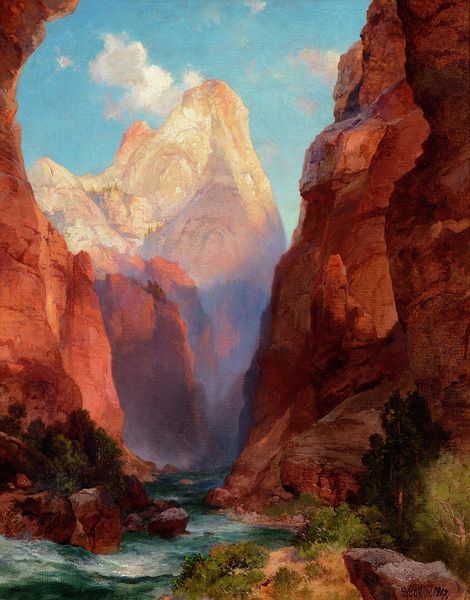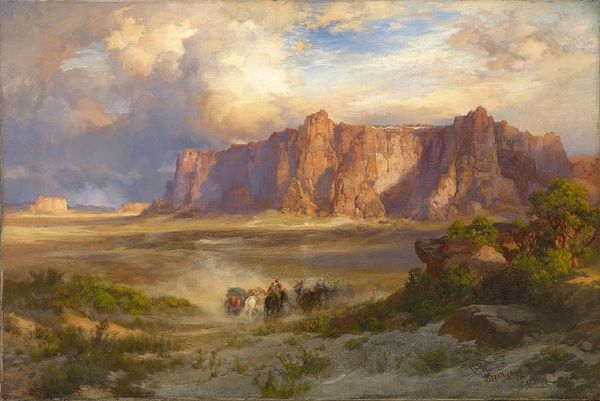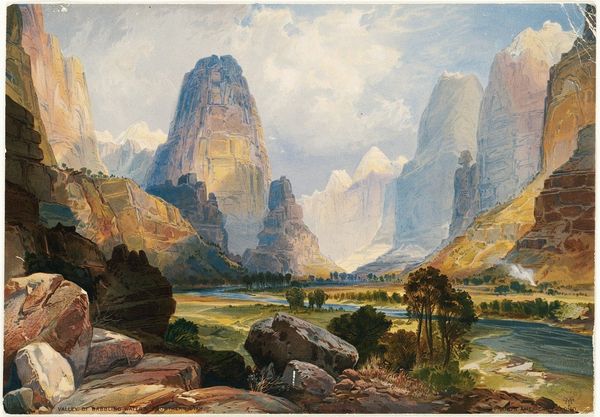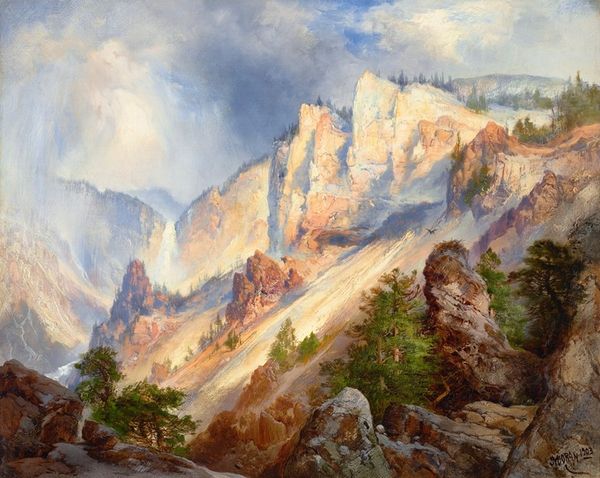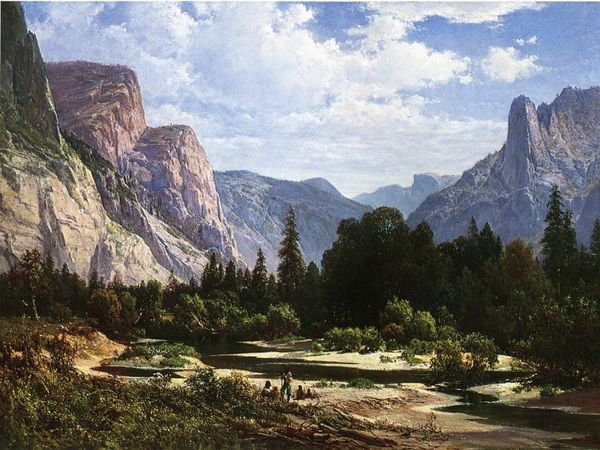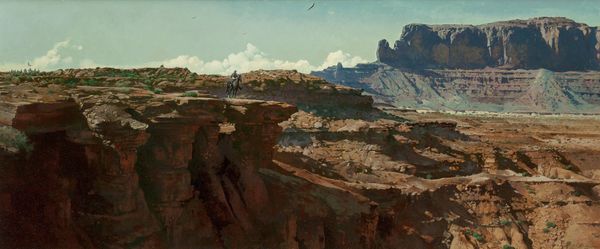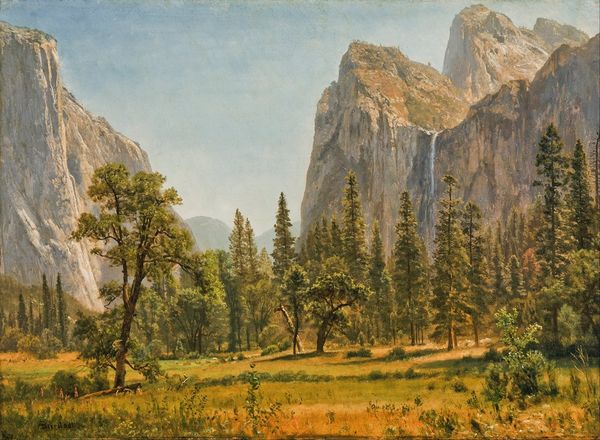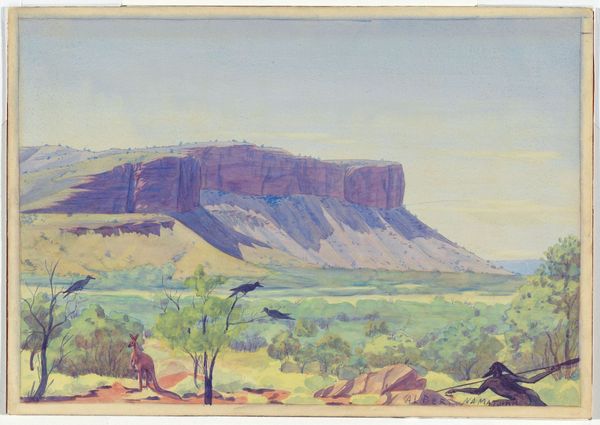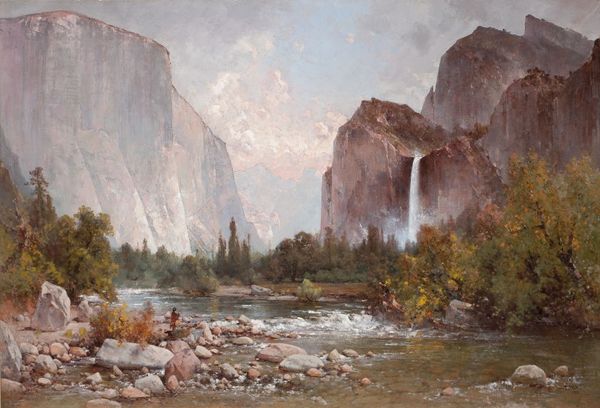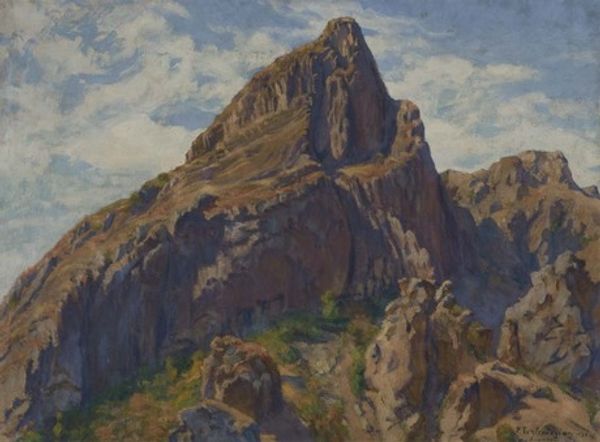
Dimensions: 24 1/2 x 29 1/2 in. (62.23 x 74.93 cm) (sight)32 x 37 x 1 1/2 in. (81.28 x 93.98 x 3.81 cm) (outer frame)
Copyright: No Copyright - United States
Curator: What strikes me first about this painting, Canyon Portal, by Edgar Payne from about 1935, is the intense heat seemingly radiating from those monumental rock faces. Editor: Yes, there's definitely a powerful sense of geological time here, and the emotional impact it produces. Those red and orange hues speak to the raw, almost primal landscape of the American West, so symbolic of early nationhood. Curator: Payne really captured something essential, the overwhelming scale. He conveys the experience of standing in such a place, dwarfed by nature's majesty, yet it speaks to a broader artistic phenomenon of representing American experience at this time. I'm thinking here about Regionalism, a key movement in the arts during the early 20th century in the United States. Editor: And how! It almost vibrates with national ambition, and that potent Manifest Destiny imagery of conquering a wild frontier. Although here, we can sense a much humbler tone. I also find that pair of figures placed at the foot of those massive formations… almost iconic in its suggestion of human insignificance compared to geological time scales. Their dark shapes really become crucial. Curator: Exactly! They really make you contemplate your place in this world, against the backdrop of such vastness and the painting’s visual symbolism suggests themes of self-discovery and adventure that can allude to the complex human experience. But also, what stories do you think these figures bring into the canyon, what historical perspective could they offer, framed by Payne’s painterly approach? Editor: Ah, so much depends on our interpretations, isn't it? I might suggest Payne is critiquing this relationship to the land… especially the narratives constructed at the time… which is interesting if he embraces it. Curator: Possibly! I wonder if his plein-air approach enhances its authentic power, almost suggesting how landscape impacts psychological perceptions. Editor: Well, the landscape itself is very impactful in so many different aspects... Payne's treatment opens further discussions about art's role in shaping ideas.
Comments
minneapolisinstituteofart almost 2 years ago
⋮
Payne loved to paint the dramatic landscapes of the southwestern United States. One of his favorite locations was Canyon de Chelly, an 18-mile-long desert canyon in northeastern Arizona. Canyon Portal shows the massive red sandstone cliffs marking the entrance—striking rock formations that surely looked exotic to viewers from the eastern United States and Europe. Overwhelmed by this powerful landscape, two small figures on horseback make humans seem insignificant.
Join the conversation
Join millions of artists and users on Artera today and experience the ultimate creative platform.
